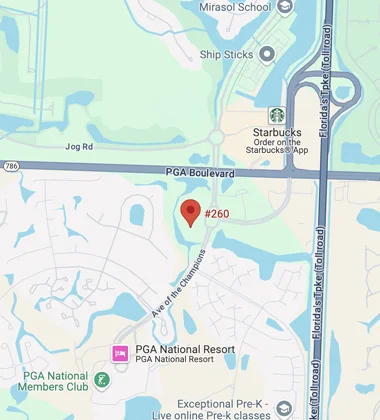How to Tell if a Website is Discriminating Against Blind Users

Title III of the Americans with Disabilities Act (ADA) requires that all privately owned businesses serving the public are accessible to individuals with disabilities, including people who are blind and have low vision. The ADA requirements also apply to business websites. Not only must the physical location of a business comply with the ADA and be accessible to individuals with disabilities, but business websites must, too. How can you tell if a website is discriminating against blind users or individuals with low vision? Our Palm Beach Gardens ADA violation lawyer can tell you more.
Web Content Accessibility Guidelines
Businesses in South Florida (and those across the country that must comply with the ADA) need to understand their obligations under the ADA, which includes being familiar with the latest Web Content Accessibility Guidelines (also known as WCAG 2.1 standards). The WCAG 2.1 standards make clear that, for a business website to be accessible for blind users and others with disabilities under the ADA, all of the following must be characteristics of the website:
- Perceivable (meaning that there are text alternatives, captions and descriptions for time-based content, that the website is adaptable, and that it is distinguishable through color, contrast, visual presentation, and more);
- Operable (meaning that it is keyboard accessible, adjustable in terms of timing, attentive to seizure triggers, navigable, and with multiple input modalities);
- Understandable (meaning that it is readable, predictable, and has input assistance); and
- Robust (meaning that it can be “interpreted by a wide variety of user agents, including assistive technologies”).
Common examples of discriminatory website content that affects blind or low-vision users includes but is not limited to the following:
- Unlabeled form fields;
- Incompatible with assistive devices;
- Lack of audio;
- Video-only presentation;
- Missing alt text for images;
- Poor contrast; and/or
- Text available in pdf only.
Website Accessibility Checklist for Blind and Low Vision Users
If you are using a business’s website and are struggling to obtain information because of a potential ADA violation, it is important to be able to identify possible violations. The following is a checklist to understand if a business website is likely accessible to users with blindness or low vision:
- Is the website comparative with assistive devices?
- Is there alt text on images?
- Is information presented in more than one way (e.g., visual, audio)?
- Is there sufficient contrast?
- Are there alternative options to filling out forms?
- Are all buttons labeled with text readable by an assistive device?
If you have any concerns about the accessibility of a business’s website, whether you or a loved one has been affected due to blindness or low vision, you should discuss those concerns with a lawyer who can help.
Contact Our Palm Beach Gardens ADA Violation Attorneys for Help Filing a Claim
Businesses in South Florida that have websites are required to comply with the ADA in their in-person physical locations as well as on their websites. Accordingly, if there are any features of a business website that have limited accessibility or are inaccessible to a user with blindness or low vision, the business may be in violation of the ADA. One of the experienced Palm Beach Gardens ADA violation lawyers at Sconzo Law Office can speak with you today about business website accessibility for blind users, and we can help you to move forward with a claim so that you have equal access, as you are guaranteed under the ADA, to all businesses in South Florida.
Source:
ada.gov/law-and-regs/regulations/title-iii-regulations/

